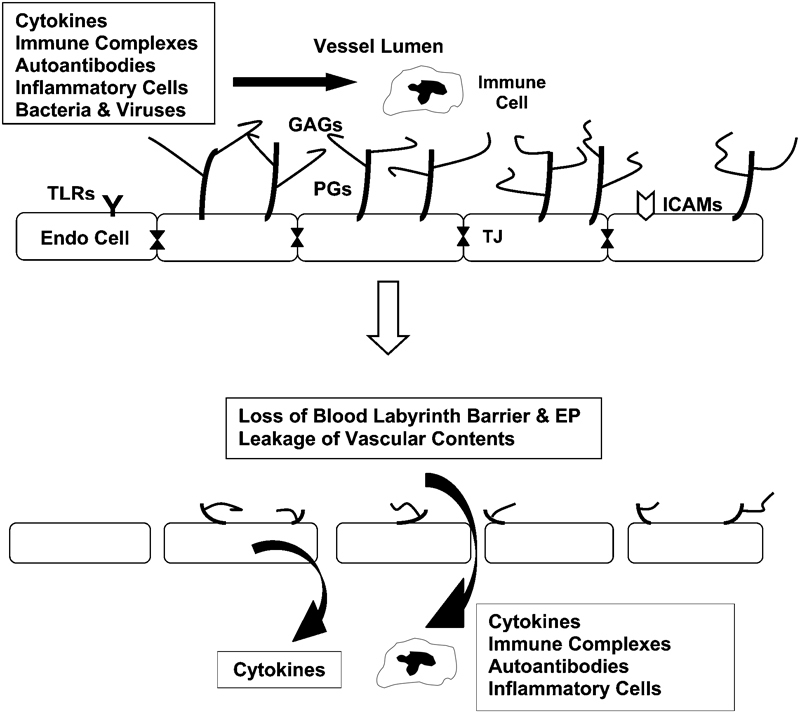Figure 1.

Vascular pathophysiology in response to circulating inflammatory factors. (Top) The glycocalyx is made up of transmembrane proteoglycan (PG) cores with glycosaminoglycan (GAG) side chains. This glycocalyx keeps red blood cells and immune cells in the central part of the capillary lumen and away from toll-like receptors (TLR) and intercellular adhesion molecules (ICAM) on the surface of endothelial cells. Endothelial cell (Endo cell) tight junctions (TJ) keep vascular components out of the pericapillary space. (Bottom) Elevated levels of circulating inflammatory factors strip off the glycocalyx and break down the tight junctions to permit movement of inflammatory factors into the surrounding tissues. Endothelial cells also produce inflammatory cytokines as part of their inflammatory response. The loss of tight junctions in the ear opens the blood-labyrinth barrier, causing compromised endolymph production and decreased endolymphatic potential (EP).
